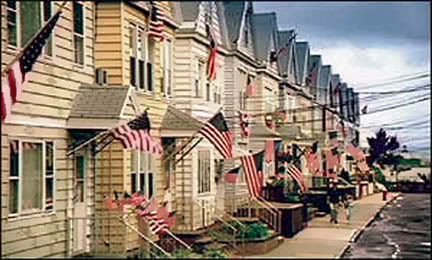The National Defense Chain of Command in a wartime emergency at the time of the September 11 attacks was: 1) President, 2) Defense Secretary, 3) regional combatant commanders. This was established by the Goldwater-Nichols DOD reorganization Act of 1986, which also allowed that on the whim of the President and Defense Secretary, communications with and oversight of these commanders pass through the Chairman of the Joint Chiefs of Staff (CJCS – the nation’s top military officer)
Tightly controlled actions, like issuing an order for fighter jets to shoot down a civilian aircraft, constituted an emergency and had to originate with the President and pass through every link in the chain to the responsible fighter pilots. As the 9/11 Commission explained, “prior to 9/11, it was understood that an order to shoot down a commercial aircraft would have to be issued by the National Command Authority (a phrase used to describe the president and secretary of defense).” [2]
This Chain of Command was not ordinarily needed to get escort fighters off the ground – this could all be done automatically and at intermediate levels, as indicated by the swift fighter response in the
Payne Stewart case. These guidelines, in effect since 1986, oddly changed just three months before September 11, with Rumsfeld asserting the sole authority to allow fighters to take off at all. This is covered in more in detail in the post
"Muzzling the Defense?" The 9/11 Commission’s final report later stated in its blameless way: “As they existed on 9/11, the protocols for the FAA to obtain military assistance from NORAD required multiple levels of notification and approval at the highest levels of government […] The protocols did not contemplate an intercept […] On the morning of 9/11, the existing protocol was unsuited in every respect for what was about to happen.” It became even more unsuited in the days and hours and even minutes before the attacks, and on the morning of September 11th, strangely, the National Command Authority’s chain of command seemed to sprout new links, swap out old ones, and seemed to not be anchored down to anything. The following posts deal with the US leadership response and the flailings and failings of a Chain of broken links.
- President Bush:
“There’s one Terrible Pilot:” The accidental President Stumbles into 9/11.
-
Vice President Cheney, the Roadmap Swap, and the “Effort.” Clarifying the Record. Did Bush hand Cheney the joystick to control the attacks?
-
Cheney and the Shoot-Down Order: Who issued the order and when? 9:45, 10:14, 10:18?
- Link #2 AWOL:
Psychic Rumsfeld’s Wanderings - Myers the stand-in: How he responds
"when things are happening." - First Day Jitters:
Sliney, Leidig, Myers: Three Defense Links Swapped out at the last minute at Joint Chiefs of Staff (ACTING Chairman richard Myers, as of ?:00 am, 9/11) Benedict Sliney at FAA Operations Center (first day as of ?:00 am, 9/11) and Leidig at the NMCC (see chart below - standing in as of 8:30 am, 9/11, as per a request from the previous day). This is spooky.
In the end, what we got was a startlingly "unprepared" and disjointed command authority that ran something like this:

 The spot’s writers certainly saw an irony in that, but the irony I see is a bit different, and I read different weather in those clouds. The attack “succeeded” not in intimidating America but, ironically, in boosting patriotism and jingoism – as well as flag sales, Bush’s popularity numbers, military recruitment, church attendance, support for a radical foreign policy of conquest, etc.
The spot’s writers certainly saw an irony in that, but the irony I see is a bit different, and I read different weather in those clouds. The attack “succeeded” not in intimidating America but, ironically, in boosting patriotism and jingoism – as well as flag sales, Bush’s popularity numbers, military recruitment, church attendance, support for a radical foreign policy of conquest, etc. 



